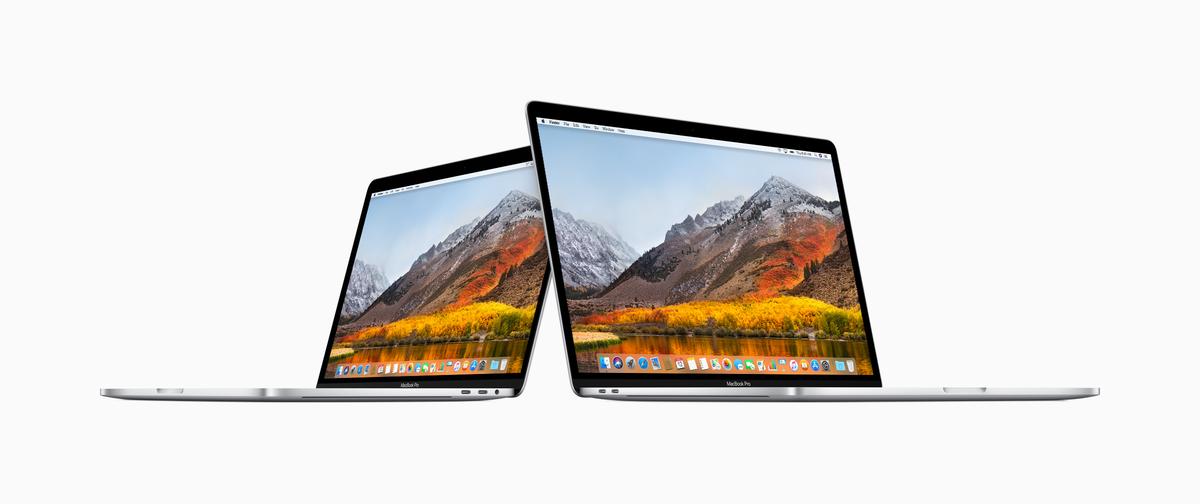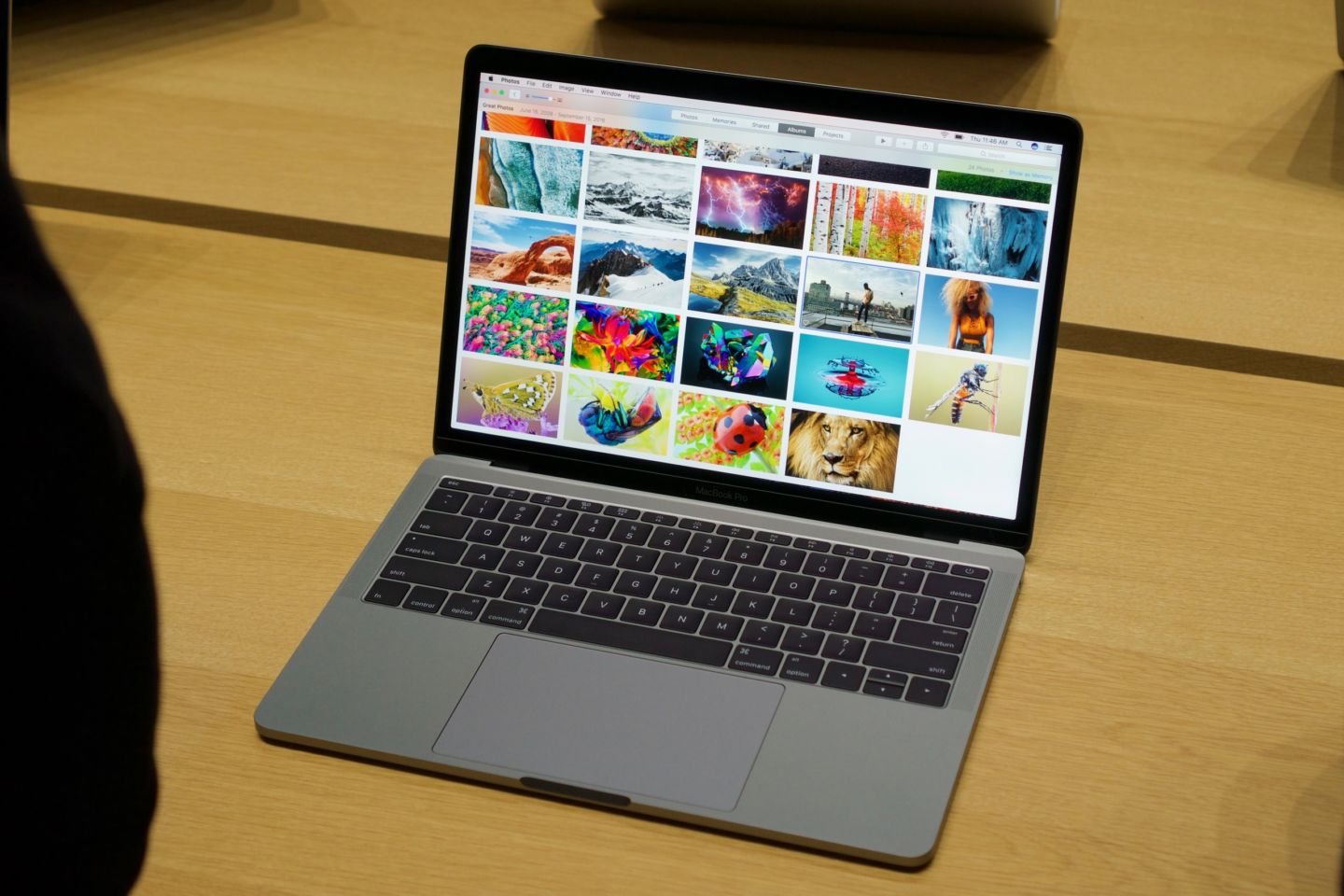With the promise of increased functionalities and better performance, it is little wonder how droves of Mac users opted for the High Sierra, some of the users' expectations were however cut short as their Mac seemed to run on slow-mo immediately after this update. Should you be among these affected users and wondering why your mac is running slow after High Sierra update, feel free to read this article for proven fixes to resolve this issue.
First, Check If Your Mac Is Compatible with High Sierra
If your Mac is not compatible with the new macOS High Sierra, it will lead to some problems when using the Mac, like poor performance and running slow. Below is a list of compatible Mac models that could work well with High Sierra.
The macOS High Sierra 10.13.6 Supplemental Update improves the stability and reliability of MacBook Pro with Touch Bar (2018) computers and is recommended for all users. Insert your desired USB drive, open Disk Utility, and format it as OS X Extended (Journaled). Open the 'macOS High Sierra Patcher' tool, and browse for your copy of the macOS High Sierra Installer App.Ensure that the tool successfully verifies the app.
- iMac (Late 2009 and later)
- MacBook (Late 2009 and later)
- Mac Mini (2010 and later)
- MacBook Pro (2010 and later)
- MacBook Air (Late 2010 and later)
- MacBook Pro (2010 and later)
After checking whether your Mac is compatible with High Sierra, next we will share with you 5 effective solutions to speed up your Mac. Just keep on reading!
How to Speed Up Your Mac after High Sierra Update?
With the uncontrolled hype of the macOS High Sierra update which is around its better data management, video streaming, and gameplay graphics, it is no wonder some Macs are running slowly to accommodate this update. Various issues have been linked to slow performances in Macs, such as full hard drive, system aging or the presence of too many applications running simultaneously. Although the specific reasons for slowing down the Mac might be unknown, the fixes for this problem have been identified and some of our trusted fixes are listed below:
- 1. Use A Mac Optimization Software [100% Workable]
- 2. Clean Hard Drive on Your MacBook
- 3. Activate the Optimize Storage Option on Your Mac
- 4. Decongest Your Mac Memory and CPU Space
- 5. Reconfigure SMC & PRAM/NVRAM
1. Use A Mac Optimization Software [100% Workable]
A powerful Mac optimization software can help a lot for a slow Mac. It can efficiently optimize your Mac through some easier ways. Here we found the best Mac optimizer, which is called Umate Mac Cleaner. It is the leading cleanup tool to make your Mac run faster and improve its performance.
4 Ways to Get a Faster Mac with Umate Mac Cleaner
One of the main features of Umate Mac Cleaner is 'Speed Up Mac',which comes with 4 options to get a faster Mac: disable the startup items, deacivate the heavy consumers, remove the launch agents and free up ram.
- Disable Startup items: Disable startup items which automatically launch when you boot the Mac.
- Deacivate Heavy Consumers: Deactivate heavy consumers that occupy CPU usage and memory.
- Remove Launch Agents: Remove those launch agents that run secretly in the background and automatically start their parent programs.
- Free Up Ram: Deactivate those processes or apps that are hogging lots of RAM on your Mac and create more space for it.
Why Umate Mac Cleaner Stands out Among Other Ways
- 2x greater performance
- 3x faster boot time
- Extremely easy to use
- Speed up Mac with just 1 click
- Safe to use without affecting important data
How to Make Your Mac Faster with Umate Mac Cleaner
Step 1. Gift ideas for gamblers. Download and install Umate Mac Cleaner, and it's free to scan how many files can be cleared.
Step 2. Select 'Speed Up Your Mac' tab on the app and click the big 'Start Now' button for locating the items that you need to disable.
Professional music editing software for mac. Step 3. Choose those items you want to disable and hit the 'Disable' button to accelerate Mac.
2. Clean Hard Drive on Your MacBook
Unlike the human brain that constantly deletes old and unnecessary data or files by itself, the Mac never automatically removes its data. The flaw of this design is that over time the limited space hard drive becomes congested and even filled up if nothing is ever deleted, hence frequent decongestion is advised.
Decongestion can be achieved via two methods, either manually or automatically. Manually, a user can go through the rigorous process of searching for and identifying all redundant files and documents on his device and delete them manually. However, compared to the automatical way, this is rather time and energy consuming.
Referring to tools such as Umate Mac Cleaner that could really help, which can automatically identify redundant and hidden files and then delete them, freeing up space on your hard drive to improve Mac's functionality and performance.
3. Activate the Optimize Storage Option on Your Mac
The Optimize Storage feature is one of the subtle yet amazing features that Mac supports but other PC haven't deployed effectively. Optimized Storage is an option permitting Mac to arrange and organize files optimally and automatically.
Macbook Pro High Sierra Update Mac

Apple Menu > About this Mac > Storage > Optimized Storage
Once this option is toggled on, it enforces Mac to automatically organize documents and clean unused, hidden or unread items, which can also transfer them to the iCloud, freeing up valuable space on your drive.
4. Decongest Your Mac Memory and CPU Space
A major reason for your slow Mac after its High Sierra update is that numerous applications are running simultaneously to consume vital CPU space so that the system slows down. When some applications run actively, others run in the background and also consume considerable space. To recover memory space and resolve this issue, we need to deploy the Activity Monitor.
Access Applications > Utilities > Activity Monitor
Under the CPU tab, you would see the distribution of CPU usage among the currently running processes. Should you identify an application that is not necessary but is consuming considerable memory space, be swift to eliminate it by tapping it and hitting the close button at the top-left corner of the screen. Unwanted apps can also be toggled off to save Memory.
5. Reconfigure SMC & PRAM/NVRAM
Macbook Pro High Sierra Update 10.12
The System Management Controller (SMC) and parameter RAM (PRAM) are important tools in ensuring the smooth functioning of the Mac. Reconfiguring the SMC resolves all hardware management issues like fans or battery faults and so on. Mac games shenzhen io 1 0. While reconfiguring the NVRAM handles issues like pertaining to booting, screen resolutions and battery charge, etc.
SMC on Mac Mini, iMac, Mac Pro & Xserve reconfiguration
- Power down your Mac and disconnect the cord
- Leave the system for 15 seconds minimum, then reconnect the power cord
- After a 5-second wait, power up the Mac normally
SMC on MacBook Pro, MacBook Air & MacBook reconfiguration

Apple Menu > About this Mac > Storage > Optimized Storage
Once this option is toggled on, it enforces Mac to automatically organize documents and clean unused, hidden or unread items, which can also transfer them to the iCloud, freeing up valuable space on your drive.
4. Decongest Your Mac Memory and CPU Space
A major reason for your slow Mac after its High Sierra update is that numerous applications are running simultaneously to consume vital CPU space so that the system slows down. When some applications run actively, others run in the background and also consume considerable space. To recover memory space and resolve this issue, we need to deploy the Activity Monitor.
Access Applications > Utilities > Activity Monitor
Under the CPU tab, you would see the distribution of CPU usage among the currently running processes. Should you identify an application that is not necessary but is consuming considerable memory space, be swift to eliminate it by tapping it and hitting the close button at the top-left corner of the screen. Unwanted apps can also be toggled off to save Memory.
5. Reconfigure SMC & PRAM/NVRAM
Macbook Pro High Sierra Update 10.12
The System Management Controller (SMC) and parameter RAM (PRAM) are important tools in ensuring the smooth functioning of the Mac. Reconfiguring the SMC resolves all hardware management issues like fans or battery faults and so on. Mac games shenzhen io 1 0. While reconfiguring the NVRAM handles issues like pertaining to booting, screen resolutions and battery charge, etc.
SMC on Mac Mini, iMac, Mac Pro & Xserve reconfiguration
- Power down your Mac and disconnect the cord
- Leave the system for 15 seconds minimum, then reconnect the power cord
- After a 5-second wait, power up the Mac normally
SMC on MacBook Pro, MacBook Air & MacBook reconfiguration
- Power down your Mac and disconnect the cord
- Leave the system for 15 seconds minimum, then reconnect the power cord
- Long Press Shift + Option + Control + Power button for 10 seconds minimum, power up the Mac normally after releasing all keys
PRAM/NVRAM reconfiguration on all Macs
- Power down the Mac, wait a few seconds
- Power up and simultaneously press Cmd + P + R + Option
- Release keys after hearing the restarting beep
Final Note
The slow Mac after High Sierra update is a widespread problem facing many users using different Mac models. However, the above manual solutios would cost you a great amount of time. Instead, the most effective one is Umate Mac Cleaner. It's an useful mac remover with just one-click, which greatly save your time with efficient cleanup. This app works amazing to speed up your Mac and you must be shocked by its powerful functions after using it.
